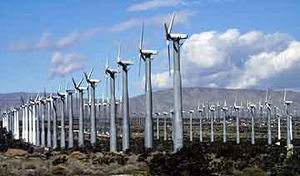Ontario residents will have to get into the habit of turning off lights and using appliances in evenings and overnight to avoid blackouts and shortages of supply, Energy Minister Dwight Duncan warned yesterday.
And to help them form the habit, the government will charge more for power, he said.
“We have to create a conservation culture to serve as a solid foundation for a sustainable-energy future. We have to encourage people to use less and to use better,” he said in a speech to the Canadian Energy Efficiency Alliance.
Mr. Duncan warned that the outlook for adequate supplies of electricity is gloomy, and this squeeze on power could harm the economy.
“We have an expensive and unreliable system that is making it impossible for us, as a province, to grow, prosper and compete.”
Future measures to encourage conservation likely will include “the application of benchmarking, interval meters or ‘smart’ control systems,” Mr. Duncan said, referring to methods of charging different prices for power at different times of day.
Ontario’s power prices will be lower overnight when demand is lower, than during the day, when businesses, factories and public transit are running, and early evenings when lights and heaters — or air conditioners — are turned on in unison with stoves and other home appliances.
The impact would be to push people to shift their power use to off-peak hours.
Ontario’s problem is exacerbated by the growth in demand and because generating plants are growing old and will need to be replaced, Mr. Duncan said in the speech, a copy of which was provided to The Globe and Mail.
“By 2020, it is projected that approximately 18,000 megawatts of Ontario’s existing electricity-generating capacity of 30,000 megawatts will need to be refurbished or replaced.”
An emphasis on conservation and increased reliance on renewable energy, such as wind and solar power, can help Ontario deal with the squeeze on supplies, Mr. Duncan argued.
“Our government has announced a goal of reducing electricity consumption in Ontario by 5 per cent by 2007, and we have also vowed to lead by example and reduce consumption in our own buildings by 10 per cent.”
Such conservation should not create hardships, he stressed.
“To me, conservation is not about freezing in the dark. It’s all about innovation and creativity. It’s any measure that can reduce a customer’s overall energy demand or reduce a customer’s demand for purchased energy.”
Under a plan announced in November, the change in prices will start on April 1. Instead of the flat rate of 4.3 cents a kilowatt hour, consumers will pay 4.7 cents a kilowatt hour for the first 750 kilowatt hours they use each month. Additional electricity will cost 5.5 cents a kilowatt hour.
As a result, most households will pay about $6 a month more for power. “It will give consumers powerful motivation to conserve.”
Next year, the Ontario Energy Board will propose a price schedule that would boost the cost of power further, adding to the pressures to conserve electricity.


